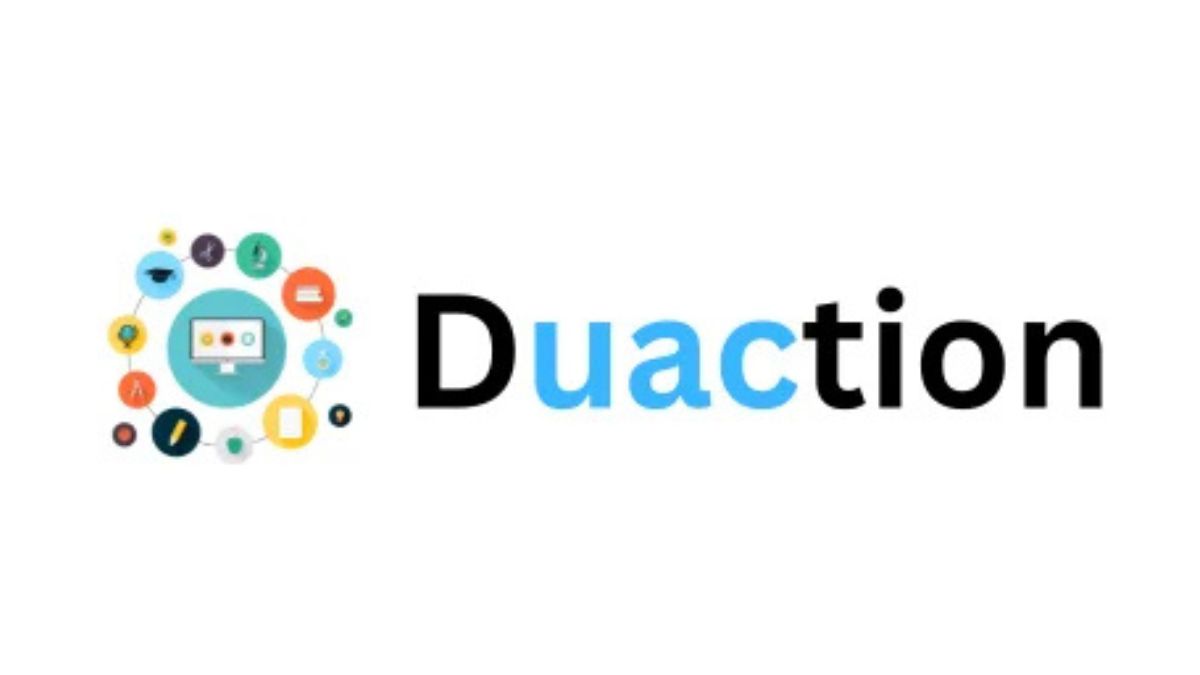In an age where language evolves rapidly to keep pace with technological, social, and cultural shifts, new terms often emerge to describe complex ideas or phenomena that existing vocabulary struggles to capture. One such term gaining traction—though still relatively niche—is duaction. At first glance, “duaction” may appear to be a typographical error or a mispronunciation of “deduction” or “duction.” However, upon closer inspection, duaction reveals itself as a deliberate and meaningful construct, blending linguistic roots to express a unique concept.
This article explores duaction in depth—its etymology, theoretical underpinnings, practical applications, and potential future relevance. Whether you’ve encountered the term in academic discourse, online forums, or speculative fiction, understanding duaction can offer fresh perspectives on decision-making, human behavior, and systemic interactions. Over the next several sections, we’ll unpack what duaction truly means, why it matters, and how it might influence thought and practice in the years ahead.
What Is Duaction? Defining the Term
The word duaction is not yet formally recognized in major dictionaries like Oxford or Merriam-Webster, but its construction follows established linguistic patterns. It appears to derive from the Latin root ducere, meaning “to lead” or “to draw,” which also gives us words like “conduct,” “induce,” and “deduce.” The prefix “du-” likely stems from the Latin duo, meaning “two,” suggesting duality or a dual process.
Thus, duaction can be interpreted as “a dual act of leading” or “a two-part process of drawing forth.” In conceptual terms, duaction refers to a simultaneous or interdependent pair of actions or decisions that influence each other in a feedback loop. Unlike linear causality—where A causes B—duaction implies that A and B co-arise, co-evolve, and co-determine one another.
For example, consider the relationship between personal identity and social environment. One doesn’t simply shape the other in isolation; instead, they continuously mold each other through ongoing interaction. This reciprocal shaping is a form of duaction.
While the term remains emergent, its utility lies in describing systems where agency and structure, choice and constraint, or individual and collective forces operate not in opposition but in dynamic interplay.
Historical and Linguistic Roots of Duaction
To fully appreciate duaction, it’s helpful to trace its linguistic ancestry. As noted, ducere is a versatile Latin verb that has spawned dozens of English derivatives:
- Deduction: reasoning from general principles to specific conclusions.
- Induction: reasoning from specific observations to broader generalizations.
- Conduction: the transmission of energy or signals.
- Seduction: the act of leading someone away, often through persuasion.
Each of these words involves a form of “leading” or “drawing.” Adding the “du-” prefix introduces duality. This is not unprecedented in English. Consider “dual,” “duet,” or “duplicate”—all imply two-ness or pairing.
Though duaction doesn’t appear in classical texts, the concept it describes has long been present in philosophy, systems theory, and cybernetics. Ancient Eastern philosophies like Taoism emphasize yin-yang dynamics—opposing yet complementary forces that co-create reality. Similarly, in Western thought, Hegelian dialectics describe how thesis and antithesis interact to produce synthesis.
What duaction offers is a concise linguistic container for these age-old ideas. It bridges the gap between abstract theory and everyday language, making complex interdependencies easier to articulate and analyze.
Duaction in Systems Thinking and Cybernetics
One of the most fertile grounds for duaction is systems thinking—the interdisciplinary study of how parts interact within a whole. In complex systems, cause and effect are rarely linear. Instead, feedback loops, delays, and emergent properties dominate.
Take climate change as an example. Human activity (e.g., burning fossil fuels) increases atmospheric CO₂, which warms the planet. But warming also triggers feedback mechanisms—like melting permafrost releasing more methane—that accelerate the original cause. Here, action and reaction are entangled in a duaction: human behavior and environmental response co-determine each other.
In cybernetics—the science of communication and control in animals and machines—duaction describes how observers and observed systems influence one another. When a thermostat regulates room temperature, it doesn’t just respond to heat; its actions alter the very conditions it measures. The system and controller are locked in a duactional dance.
This perspective challenges the myth of the detached observer. In reality, every intervention changes the system, and every observation is shaped by the observer’s position within it. Recognizing duaction helps us design more adaptive, resilient systems—whether in engineering, ecology, or organizational management.
Duaction in Psychology and Human Behavior
Human psychology is rife with examples of duaction. Consider the relationship between thought and emotion. Traditional models often treat cognition and affect as separate domains, but modern neuroscience shows they are deeply intertwined. Thoughts can trigger emotions (e.g., worrying about failure causes anxiety), but emotions also shape thoughts (e.g., feeling sad leads to pessimistic interpretations).
This bidirectional influence is a classic case of duaction. Neither thought nor emotion is primary; they co-arise and mutually reinforce or regulate each other. Therapeutic approaches like Cognitive Behavioral Therapy (CBT) implicitly work with this dynamic, helping clients disrupt negative duactional loops by altering either thoughts or feelings.
Similarly, in social psychology, the concept of “self-fulfilling prophecy” illustrates duaction. If a teacher believes a student is gifted, they may treat them with more encouragement, which boosts the student’s confidence and performance—confirming the original belief. The belief and the behavior form a duactional pair: each sustains the other.
Understanding these loops allows individuals and institutions to intervene more effectively. By identifying which element in a duaction is more malleable, we can break harmful cycles or reinforce beneficial ones.
Duaction in Technology and Artificial Intelligence
As artificial intelligence (AI) becomes more embedded in daily life, duaction offers a crucial lens for understanding human-AI interaction. AI systems don’t operate in a vacuum; they learn from human data and, in turn, shape human behavior.
For instance, recommendation algorithms on social media platforms analyze user preferences to suggest content. But the content shown also influences what users like, share, and believe over time. This creates a duaction: user behavior trains the AI, and the AI steers user behavior.
This dynamic raises ethical concerns. If left unchecked, such duactional systems can create echo chambers, amplify biases, or manipulate attention. However, if designed mindfully, they can also foster learning, creativity, and connection.
Moreover, in human-robot interaction, duaction helps explain how trust and collaboration develop. A robot that adapts to a human’s gestures encourages more natural interaction, which in turn provides better data for the robot to refine its responses. The human and machine are not just interacting—they are co-evolving through duaction.
Future AI ethics frameworks may need to explicitly account for duaction, ensuring that technological systems enhance rather than exploit these reciprocal dynamics.
Duaction in Education and Learning
Education is another domain where duaction proves illuminating. Traditional models often position the teacher as the sole source of knowledge and the student as a passive recipient. But contemporary pedagogy recognizes learning as a co-constructed process.
In a dialogic classroom, teacher and student engage in mutual inquiry. The teacher’s questions provoke student thinking, while student responses reshape the teacher’s understanding and next steps. Knowledge emerges not from one party but from the duaction between them.
Similarly, peer learning embodies duaction. When students explain concepts to each other, both the explainer and the listener deepen their understanding. The act of teaching reinforces learning, and the act of listening challenges assumptions—creating a virtuous duactional cycle.
Even in self-directed learning, duaction is present. A learner’s curiosity drives them to seek information, but the information they encounter reshapes their curiosity, leading them down new paths. Learning, therefore, is never a solo journey but a continuous duaction between self and world.
Educators who embrace this view design environments that foster dialogue, reflection, and feedback—key ingredients for productive duaction.
Duaction in Economics and Social Policy
Economic systems are inherently duactional. Markets don’t just reflect human preferences; they also shape them. Advertising, for example, doesn’t merely respond to demand—it creates it. Consumers influence producers through purchases, and producers influence consumers through marketing, product design, and pricing.
This reciprocal relationship challenges simplistic notions of “free choice.” Choices are always made within contexts that have been co-created through prior duactions.
In social policy, duaction helps explain why top-down interventions often fail. Policies that ignore the feedback between institutions and citizens can produce unintended consequences. For example, welfare programs designed without community input may inadvertently discourage work or foster dependency—not because people are lazy, but because the system’s design creates a duactional trap.
Conversely, participatory policy-making leverages duaction positively. When citizens co-design solutions with policymakers, the resulting programs are more aligned with real needs and more likely to succeed. The policy shapes behavior, and citizen feedback refines the policy—a healthy duaction.
Recognizing duaction in economics and governance encourages humility, adaptability, and co-creation—qualities essential for tackling complex societal challenges.
Critiques and Limitations of the Duaction Concept
While duaction offers a powerful framework, it is not without limitations. Critics may argue that it’s merely a repackaging of existing ideas like reciprocity, feedback loops, or dialectics. Indeed, the novelty of duaction lies more in its linguistic convenience than in its conceptual originality.
Moreover, overemphasizing duaction could lead to relativism—suggesting that all actions are so interdependent that individual responsibility becomes meaningless. This is a misinterpretation. Duaction doesn’t negate agency; it contextualizes it. We still make choices, but those choices occur within relational fields that shape and are shaped by them.
Another challenge is operationalizing duaction in research or practice. How do we measure or model dual, co-evolving processes? While systems dynamics and network analysis offer tools, applying them requires interdisciplinary collaboration and methodological innovation.
Despite these critiques, duaction remains a valuable heuristic—a mental model that helps us see connections we might otherwise miss. Its strength is not in replacing existing theories but in complementing them with a focus on mutuality and co-creation.
The Future of Duaction: Why It Matters
As global challenges grow more interconnected—climate change, inequality, digital transformation—the need for duactional thinking becomes urgent. Siloed approaches fail because they ignore the feedback between domains. Solving climate change isn’t just about technology; it’s about culture, economics, and behavior—all locked in duaction.
In personal development, embracing duaction fosters self-awareness and empathy. We begin to see how our actions ripple outward and how external forces shape our inner world. This awareness supports more intentional, compassionate living.
In organizations, duaction encourages collaborative leadership. Leaders don’t dictate; they listen, adapt, and co-create with teams. This builds trust, innovation, and resilience.
Ultimately, duaction is more than a word—it’s a worldview. It reminds us that we are never isolated actors but participants in vast, dynamic networks of mutual influence. By naming this reality, duaction empowers us to engage with it more wisely.
Conclusion
Duaction may be an emerging term, but the phenomenon it describes is timeless. From the dance of subatomic particles to the rhythms of human relationships, dual, interdependent processes shape our universe. By giving this dynamic a name, we gain a tool for clearer thinking, better design, and deeper connection.
Whether in psychology, technology, education, or policy, recognizing duaction helps us move beyond simplistic cause-effect models toward more nuanced, systemic understanding. It invites humility—acknowledging that our actions are both powerful and embedded—and hope, because it means we can co-create better futures through mindful interaction.
As society grapples with complexity, duaction offers a compass. It doesn’t provide easy answers, but it frames the right questions: How do we influence and are influenced? How can we participate in duaction that heals rather than harms? And how might this small word help us build a more integrated, responsive world?
In the end, the value of duaction lies not in its frequency of use, but in its capacity to transform how we see—and engage with—reality itself.












